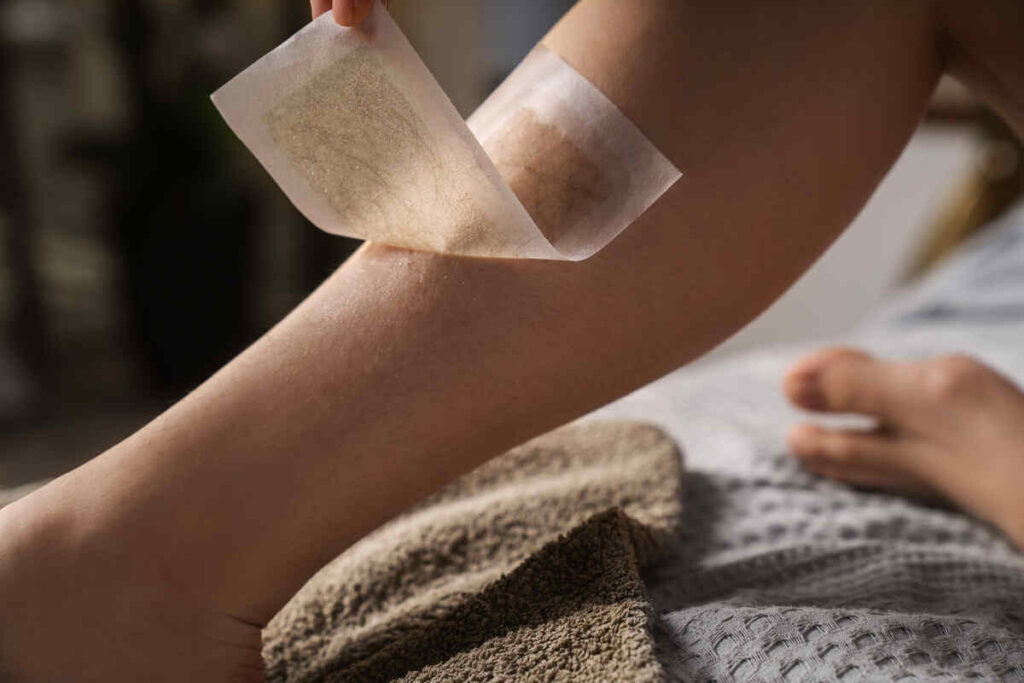Introduction
In the vibrant city of Gainesville, Florida, the pursuit of beauty and self-care extends to the realm of hair removal practices. From ancient civilizations to modern innovations, the quest for smooth. Hair-free skin has been a timeless aspect of personal grooming and beauty standards. In this article, we explore the fascinating evolution of hair removal techniques and technologies. Tracing their origins from ancient times to contemporary trends in Gainesville.
Through this exploration, we aim to uncover the cultural, social, and technological influences that have shaped hair removal practices over the centuries, and how Gainesville residents are embracing innovative solutions to achieve their desired aesthetic. Join us on this journey as we delve into the rich tapestry of hair removal history and contemporary trends in the dynamic city of Gainesville.
Ancient Origins of Hair Removal

- Egyptian Civilization: In ancient Egypt, hair removal was not only a matter of hygiene but also a symbol of social status and beauty. Egyptians developed depilation creams made from ingredients like quicklime and starch. As well as sugaring techniques using a paste of honey, sugar, and lemon juice to remove unwanted hair.
- Mesopotamian Practices: Hair removal practices in Mesopotamia also date back to ancient times. Methods such as threading and tweezing were used, with tools made from materials like bronze and seashells. These methods were employed by both men and women to achieve smooth skin.
- Greek Influence: In ancient Greece, hair removal was associated with notions of purity and athleticism. Athletes would remove body hair to enhance their performance, using razors made from bronze or flint. Along with pumice stones, to achieve smooth skin. Hair removal was considered a standard grooming practice among Greek citizens.
- Cultural Significance: Across these ancient civilizations, hair removal was intertwined with cultural practices, social norms, and ideals of beauty. Smooth, hairless skin was often associated with cleanliness, youthfulness, and aesthetic appeal. Leading to the development of various techniques and tools to achieve hair removal. These ancient practices laid the foundation for the diverse range of hair removal methods still used today.
Medieval and Renaissance Era
During the Medieval and Renaissance eras, hair removal practices underwent notable shifts influenced by societal, religious, and cultural factors. In the Medieval period, hair removal became less prevalent due to the prevailing religious influences that emphasized modesty and natural appearance. The Church promoted the notion of covering one’s body as a sign of piety. Leading to a decline in grooming practices such as hair removal. However, with the onset of the Renaissance, there was a resurgence of interest in grooming and aesthetics among European elites. This period marked a shift towards a more secular worldview. Characterized by a renewed appreciation for beauty, art, and individual expression.
As a result, hair removal once again became a part of grooming routines, particularly among the upper classes. Women, in particular, employed various methods such as tweezers, abrasives, and even walnut oil to remove unwanted hair. Reflecting changing beauty standards and social norms. Smooth, hairless skin was associated with refinement and sophistication. Leading to the continued development and refinement of hair removal techniques during this period. The Renaissance saw a cultural revival that extended to personal grooming. With individuals seeking to emulate the beauty ideals of classical antiquity. As a result, hair removal practices became more widespread and ingrained in European society. Setting the stage for further evolution in the centuries to come.
Industrial Revolution and Modernization
The Industrial Revolution and the subsequent wave of modernization brought about significant changes in hair removal practices, reflecting broader shifts in societal norms and technological advancements. With the advent of industrialization, new methods and tools for hair removal became more widely available. Revolutionizing grooming habits across various social strata. Safety razors, depilatory creams, and other grooming products became increasingly accessible. Allowing individuals to achieve smooth, hair-free skin more conveniently than ever before.
The emergence of commercial beauty salons further democratized access to professional hair removal services, offering treatments such as waxing and sugaring to meet the growing demand for grooming solutions. Moreover, the introduction of electric shavers and epilators provided alternative options for hair removal, catering to diverse preferences and lifestyles. As urbanization and modernization accelerated, grooming practices evolved to reflect changing beauty ideals and personal preferences, with smooth skin becoming synonymous with modernity and sophistication. These developments underscored the ongoing evolution of hair removal practices in response to technological innovation and societal change.
Traditional Methods
Traditional methods of hair removal have been practiced for centuries and continue to be popular choices for many individuals. These methods include shaving, waxing, and tweezing. Shaving involves using a razor to cut the hair off at the skin’s surface, providing immediate but temporary results. Waxing, on the other hand, involves applying a thin layer of wax to the skin, allowing it to harden before pulling it off, along with the hair, in the opposite direction of growth.
This method offers longer-lasting results as it removes hair from the root. Tweezing involves using a pair of tweezers to pluck individual hairs from the skin, providing precise but time-consuming hair removal. While these traditional methods may require more frequent maintenance compared to modern techniques, they remain popular due to their accessibility, affordability, and effectiveness in achieving smooth, hair-free skin.
Waxing

It involves applying a layer of warm wax to the skin in the direction of hair growth and then placing a cloth or paper strip over the wax. The strip is then quickly pulled off against the direction of hair growth, removing the wax along with the unwanted hair from the root. This process results in smooth and hair-free skin that can last for several weeks before regrowth occurs. Waxing is commonly used on areas such as the legs, arms, underarms, bikini line, and face.
While waxing may cause some discomfort, especially during the removal of the wax strip, many individuals find the results worth the temporary discomfort. Additionally, frequent waxing can lead to finer regrowth over time, making subsequent sessions more comfortable. Overall, waxing is a popular choice for those seeking longer-lasting hair removal results with minimal hassle
Sugaring
Sugaring is an ancient hair removal technique that has gained popularity for its natural ingredients and gentle approach. This method involves using a paste made from sugar, lemon juice, and water, which is applied to the skin in the direction of hair growth. The paste adheres to the hair and is then quickly pulled off in the opposite direction of hair growth, removing the hair from the root. Sugaring is similar to waxing but is often considered less painful because the paste adheres less to the skin, reducing the risk of irritation and discomfort.
Additionally, sugaring is suitable for individuals with sensitive skin as it does not contain harsh chemicals or resins found in traditional waxes. The natural ingredients in sugaring paste also have exfoliating properties, leaving the skin feeling smooth and soft after hair removal. Sugaring can be used on various areas of the body, including the legs, arms, underarms, and bikini line, making it a versatile and effective hair removal option for many individuals.
Contemporary Trends and Innovations in Gainesville
In Gainesville, Florida, contemporary trends and innovations in hair removal practices have witnessed a significant evolution, reflecting the city’s dynamic and progressive nature. With an increasing emphasis on convenience, effectiveness, and sustainability. Gainesville residents have access to a diverse range of cutting-edge techniques and technologies for achieving smooth, hair-free skin. Laser hair removal has emerged as a highly sought-after option, offering long-lasting results with minimal discomfort and downtime. This advanced method utilizes concentrated beams of light to target hair follicles, effectively reducing hair growth over multiple sessions.
Gainesville residents, particularly those with busy lifestyles, are drawn to the convenience and efficiency of laser treatments. Which can be tailored to target specific areas of the body. Furthermore, sugaring has gained traction as a natural and eco-friendly alternative to traditional waxing. Made from simple ingredients such as sugar, lemon, and water, sugaring is gentle on the skin and produces smooth results with less irritation. This method aligns with Gainesville’s environmentally-conscious ethos, appealing to residents who prioritize sustainability in their grooming routines.
Additionally, advancements in at-home hair removal devices have empowered individuals to take control of their grooming regimen. IPL machines and epilators offer salon-quality results in the comfort of one’s own home. Providing a convenient and cost-effective alternative to professional treatments. These contemporary trends and innovations underscore Gainesville’s commitment to offering residents the latest advancements in hair removal technology. Ensuring they have access to a diverse range of options to achieve their desired aesthetic goals.
Conclusion
In conclusion, the landscape of hair removal practices has evolved significantly over time, from ancient civilizations to modern innovations in Gainesville. Each era has witnessed the development of new techniques and technologies, driven by changes in societal norms, cultural preferences, and technological advancements. From the ancient origins of depilation creams and sugaring to the Renaissance resurgence of grooming practices and the Industrial Revolution’s introduction of safety razors and depilatory creams, hair removal has remained a constant pursuit of beauty and self-care.
In contemporary Gainesville, residents have access to a wide range of innovative hair removal options, including laser treatments, sugaring, and at-home devices, reflecting the diversity of preferences and needs in today’s society. Despite the evolution of techniques and technologies, the desire for smooth, hair-free skin remains timeless. Highlighting the enduring significance of hair removal in personal grooming routines and beauty standards. As Gainesville continues to embrace new trends and innovations in hair removal. One thing remains clear: the pursuit of smooth, hair-free skin is a journey that spans cultures, generations. Technological advancements, reflecting the timeless quest for beauty and self-expression




